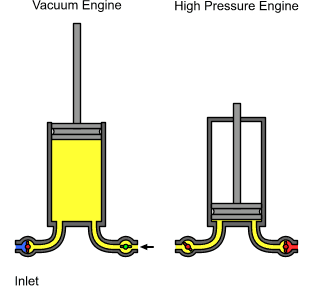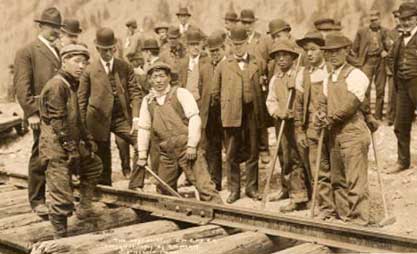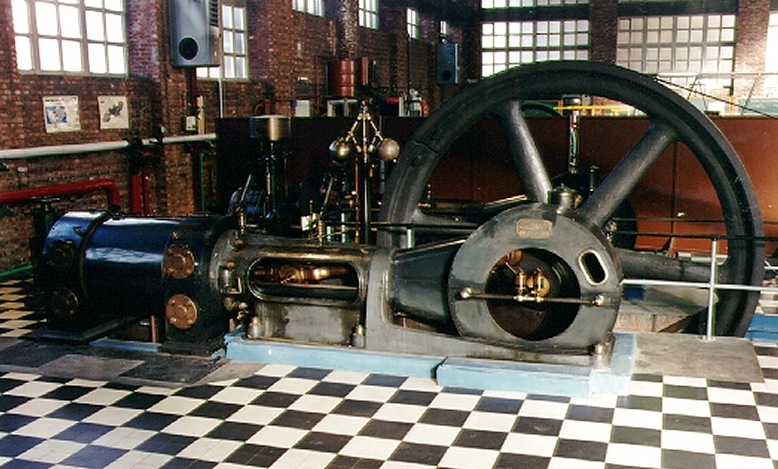 .....
..... Railways as a prototype using old materials in new ways
![]() "As more elaborate forms of decoration appeared and the engine house in a factory or pumping station often looked like a small church. The engine was being presented as the most telling 'sign' of modern life.
"As more elaborate forms of decoration appeared and the engine house in a factory or pumping station often looked like a small church. The engine was being presented as the most telling 'sign' of modern life.
It (the steam engine) was the controlling symbol for a new kind of culture."
Pacey, p. 167.
dates | Empires | technical steam advances | invention | development | origins
A world based on: precision, accuracy, reliability & performance:
 The technical or formal success of sequencing and standardization in the functional capacity of railways laid the foundation for the convergence of the telegraph and military organization that lead to effective railway operation from 1830 to 1890 which transformed the world.
The technical or formal success of sequencing and standardization in the functional capacity of railways laid the foundation for the convergence of the telegraph and military organization that lead to effective railway operation from 1830 to 1890 which transformed the world.
This revolution in mechanization occurred through a convergence of specialized inventions that propelled a reorganizing of labor, capital investments, raw materials, space, time and even genetics. And with the behavioral changes in human lives came the birth the first really large companies requiring bureaucracies, lawyers, scientific management, unions, land agents, advertising, and a network of raw materials to feed the transportation of people and materials.
As such, this reorganization of whole regions of the world, including the creation of global time zones and networks of imperial ambitions established the first truly modern, mechanized, and politically influential tool complex. The power of railroads was such that adaptation to its many demands reshaped work while exaptation of railway related machinery lead to inventions in automation.
dates | Empires | technical steam advances | invention | developments
Formal or Technical features -- Steam engines
The technical pieces required to make steam engines transform transportation included iron ore and coke furnaces for making steel rails, cables and bridges. Adequate wood for track bed and fuel, water for steam, gears for the transfer of rotary to back and forth motion, air brakes, magnets for telegraph signaling, electrical lines, all had to converge to make the railway's performance reliable.
dates | Empires | technical steam advances | invention | developments
“Technology can never be adequately understood in terms of machines and techniques
alone. Machines are always used within a framework of organization
and management, and often there are organizational changes at the heart of
important technological developments."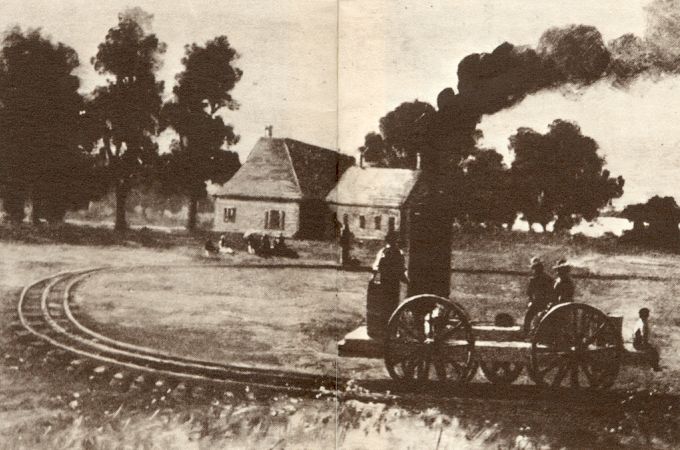
An early British locomotive.
dates | Empires | technical steam advances | invention | developments
In transforming the geography of settlement and markets of any 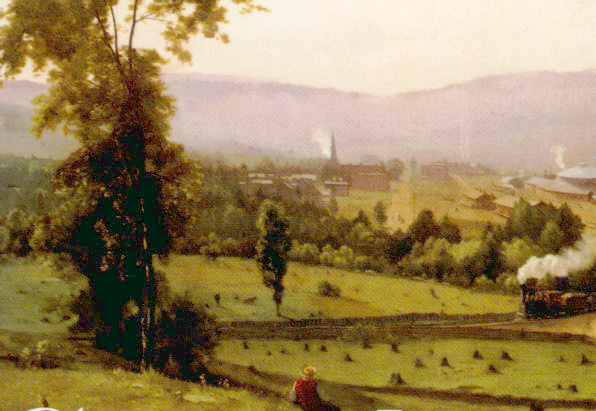 place touched by railway engineering, the railroad altered property ownership of fixed as well as moving equipment, placed a premium on certain kinds of terrain, mining, and terminal locations, enabled commercial concentration, and reinvented the architecture of Europe, America and Asia.
place touched by railway engineering, the railroad altered property ownership of fixed as well as moving equipment, placed a premium on certain kinds of terrain, mining, and terminal locations, enabled commercial concentration, and reinvented the architecture of Europe, America and Asia.
dates | Empires | technical steam advances | invention | developments
The social and behavioral dimensions of railways included an application of military hierarchies of command and control to the division of labor, new forms of accounting, payroll, auditing and investment banking, the creation of scheduling, sales and publicity departments, separate legal divisions, support staff (payroll) and incredibly skilled workers. Without coordination, clocks, machine shops, standardization and the application of uniform methods of measurement railways could not succeed. They --like the chemical industry in Germany-- required the creation of specialized mechanical and engineering schools and thus encouraged the growth of universities, trade schools, and public schools.
Life for average people changed, drawn off of farms and into urban industrial centers linked by railways the genetic isolation of whole villages and local families could now be mingled by meeting both immigrant laborers from half a world away (China and Ireland) and travelers who had never ventured very far from coastal cities and towns.
dates | Empires | technical steam advances | invention | developments

Culture & symbolism
| Three railway advertisement posters from 1840s -1930s | ||
 |
 |
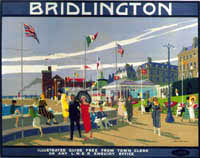 |
The Newcastle and Carlisle Railway Carlisle Races 1846 |
London, Brighton and South Coast Railway
Excursions From 1901 |
London and North Eastern Railway
Bridlington by H. G. Gawthorn, ca. 1930 |
The earliest advertisements by the railways were simple, giving factual information about the services offered. These letter-press hand bills and notices were similar to those which had been used by the stage-coaches. A simple statement of the services the railways offered was enough to show that they were preferable and often quicker and cheaper. These early posters were produced using standard printers' blocks.
dates | Empires | technical steam advances | invention | developments
A new conceptualization of machinery arose:
Compare these locomotives and their engines with Watt and Newcomen engines.
"European interest in production equipment found its highest expression in attitudes to factory steam engines. The railroad locomotive appeared in public, drawing trains past platforms crowded with passengers, and it is understandable that its appearance was a matter of pride.
By contrast the industrial steam engine operated inside a building, well away from casual public attention."
dates | Empires | technical steam advances | invention | developments
Indeed the modern concept of transportation and communication was born in the wake of railroads transformation of commercial nations into industrial empires. In that sense the fine technologies represented by the piston and the drive shaft, the electromagnet and the copper wire were fused together, wedded effectively in the delivery of a service that gave birth to twin children: automotive and aeronautical engineering. Neither offspring would have prospered except on the foundations of the mechanical revolution created originally by the necessity of getting mined coal overland to iron mines and forges for the smelting of iron in the 17th century.
The measure, means, method, and materials were all reinvented, reorganized and reified by railroading.
dates | Empires | technical steam advances | invention | developments
measure, the quantification of distance and time standardized by railroads.
means, the industrial organization of the factory supported successful railroads.
method, hierarchical organization and bureaucracy adopted scientific management and Taylorism to train specialized workers.
materials, the needs of safety, speed, maintenance and performance encouraged the need of automated machinery that was the foundation of developments in automated technologies and a more standardized society.
 |
||
|---|---|---|
| Tools of Toil: what to read. | ||
| Tools are historical building blocks of technology. | ||
Pursell | Pacey–World | Postman | Tenner |Pacey–meaning| Eberhart | Snow | Kaku | Boulding | Delillo | Kranzberg


